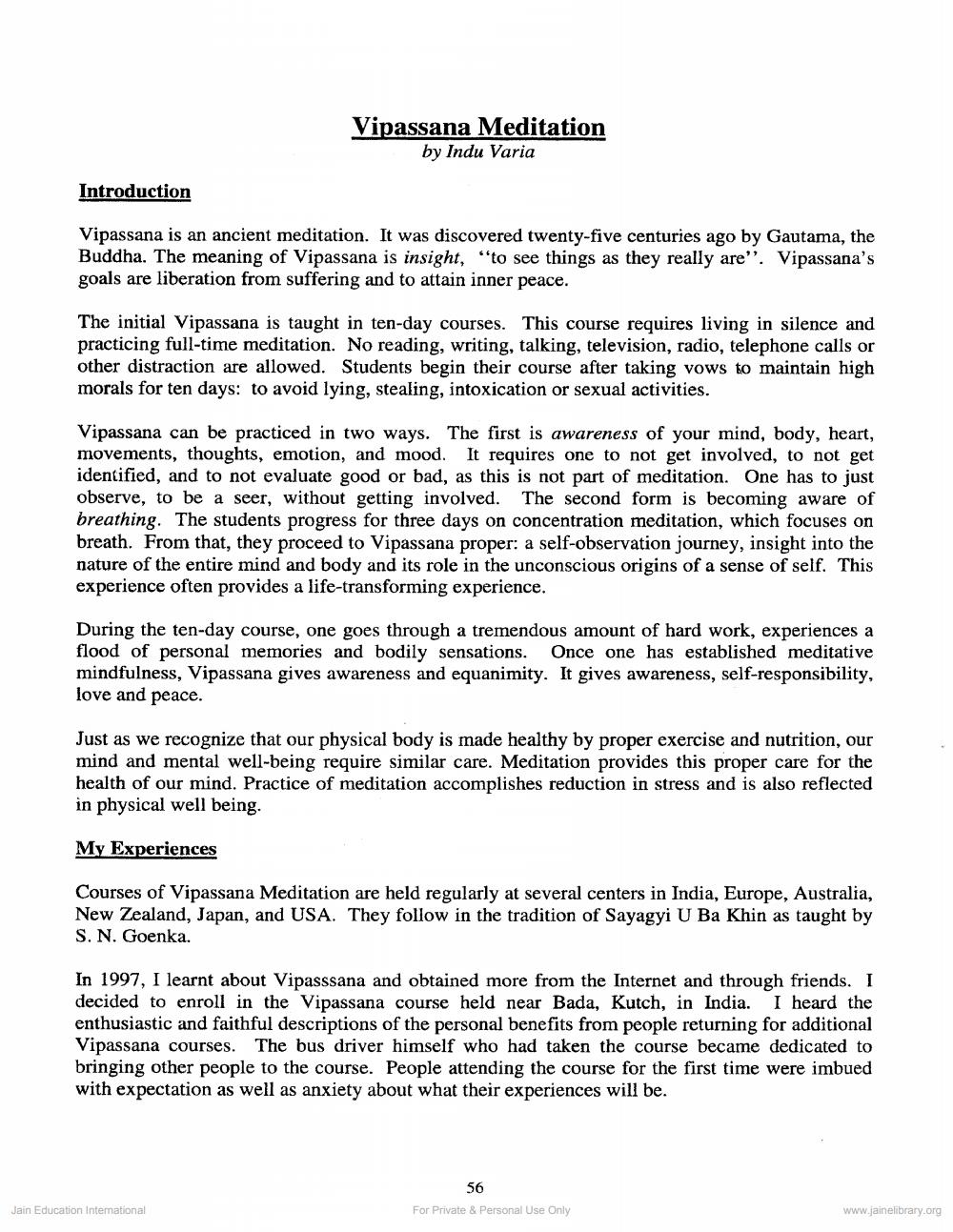________________
Vipassana Meditation
by Indu Varia
Introduction
Vipassana is an ancient meditation. It was discovered twenty-five centuries ago by Gautama, the Buddha. The meaning of Vipassana is insight, "to see things as they really are''. Vipassana's goals are liberation from suffering and to attain inner peace.
The initial Vipassana is taught in ten-day courses. This course requires living in silence and practicing full-time meditation. No reading, writing, talking, television, radio, telephone calls or other distraction are allowed. Students begin their course after taking vows to maintain high morals for ten days: to avoid lying, stealing, intoxication or sexual activities.
Vipassana can be practiced in two ways. The first is awareness of your mind, body, heart, movements, thoughts, emotion, and mood. It requires one to not get involved, to not get identified, and to not evaluate good or bad, as this is not part of meditation. One has to just observe, to be a seer, without getting involved. The second form is becoming aware of breathing. The students progress for three days on concentration meditation, which focuses on breath. From that, they proceed to Vipassana proper: a self-observation journey, insight into the nature of the entire mind and body and its role in the unconscious origins of a sense of self. This experience often provides a life-transforming experience.
During the ten-day course, one goes through a tremendous amount of hard work, experiences a flood of personal memories and bodily sensations. Once one has established meditative mindfulness, Vipassana gives awareness and equanimity. It gives awareness, self-responsibility, love and peace.
Just as we recognize that our physical body is made healthy by proper exercise and nutrition, our mind and mental well-being require similar care. Meditation provides this proper care for the health of our mind. Practice of meditation accomplishes reduction in stress and is also reflected in physical well being.
My Experiences
Courses of Vipassana Meditation are held regularly at several centers in India, Europe, Australia, New Zealand, Japan, and USA. They follow in the tradition of Sayagyi U Ba Khin as taught by S. N. Goenka.
In 1997, I learnt about Vipasssana and obtained more from the Internet and through friends. I decided to enroll in the Vipassana course held near Bada, Kutch, in India. I heard the enthusiastic and faithful descriptions of the personal benefits from people returning for additional Vipassana courses. The bus driver himself who had taken the course became dedicated to bringing other people to the course. People attending the course for the first time were imbued with expectation as well as anxiety about what their experiences will be.
Jain Education Intemational
For Private & Personal Use Only
www.jainelibrary.org




